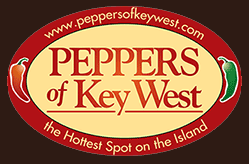A Brief History of Early Key West
Key West was an island called Cayo Hueso – or the English translation of Island of Bones – by early Spanish travelers and has a very interesting beginning. The original inhabitants of Key West were the Calusa people. At the time, a Spanish captive translated Calusa to “fierce people”. The Calusa are the first society to develop a culture of fishing as opposed to agriculture. In 1513 Juan Ponce de Leon left Puerto Rico in search of land north of Cuba. Ponce de Leon is the first person to bring a European influence to Florida and the Keys.
Not much happened until 1815 when Juan Pablo Salas acquired the island in a Spanish land grant from Don Juan de Estrata. In 1822 John W. Simonton purchased the island from Juan Pablo Salas. The Revolutionary War allowed the United States to claim possession of Florida and the Keys. Cayo Hueso was a new US territory and the governors had to verify the legitimacy of the land grant to Salas. The process went round and round until 1828 when Congress finally acknowledged the validity of the grant. Simonton became the legal owner of the island and the town officially became known as the “City of Key West”.
Piracy was an issue at this time from which Key West saw the first of many military escalations on the island. Within a few years, the desolated island turned into a bustling city. The first true non-military related industry on Key West started around the year 1830. As a byproduct of desalinization efforts, salt production began where the present day airport is located. Surrounding the airport are areas still referred to as the salt ponds or flats.
In 1831 William Wall started the first Key West cigar factory. This brought the influence of the Cuban population. By 1868 there was a large population of Cuban cigar makers and workers that made the 90 mile trek across the ocean, residing on the island. Key West quickly became the largest populated city in Florida. This population was mainly those involved with the cigar industry. In 1840 a new industry was looming in Key West – the sponge industry. This secondary industry brought an influx of Bohemians the 200 miles to Key West.
Henry Morrison Flagler gave Key West it’s next shot in the arm. By 1912 the first train arrived and the Florida East Coast Railway was responsible for bringing more military to Key West during the First World War. This marked the beginning of Key West as a naval training facility. In 1932, building of the first United States submarine base was completed and the island was once again bustling with military activity.
The 1935 Labor Day Hurricane severed the infrastructure connecting Key West to the mainland. This hurricane was the first of only three category 5 hurricanes to make landfall on United States soil. The storm created storm surges of 20 feet where the highest point on the island is a mere 17 feet. Before expansion, there was one lane in and out of Key West. The hurricane destroyed forty miles of railway leading to Key West and the island was back to depending on maritime transportation along with some help from the new industry of air transportation. The second overseas highway was built overtop the decimated rail system and bridges. During the reconstruction, one goal was to widen the narrow rail bridges to accommodate traffic flow in two directions. In 1935 the new infrastructure was completed and for the first time a person could drive all the way to and from Key West without the use of car ferries. Tourist potential was now a reality.
In 1945 World War II brought the Navy back to Key West and expansion of military operations required a new US Naval Air Station. The requirements of the Navy in Key West helped all of the Keys. Providing fresh water to our military members was essential. To support wartime operations, the military completed an eighteen inch water supply line that ran the length of the Keys. The pipeline ran from the mainland down to Key West and supplied all the inhabitants with fresh water and still does today. For emergencies, a water desalinization plant is still operating in Key West. The military also required an improved highway system because of larger and heavier equipment that the original roads and bridges could not handle. When the war ended and the military returned home the economy on Key West once again deteriorated. “Pink Gold” or the shrimping industry saved the economy of the island. As with once popular Cuban cigars, we now had Key West Pinks to stimulate the Key West economy.
Like a military economy, a tourist economy is unpredictable. Key West, along with other Keys off the mainland, has survived many calamities. One thing is for sure – Key West and the Florida Keys possess a rare beauty and charisma that keep tourists coming all year long. Today, cruise ships and the tourism industry pull in an estimated four million visitors annually!


Leave a Reply